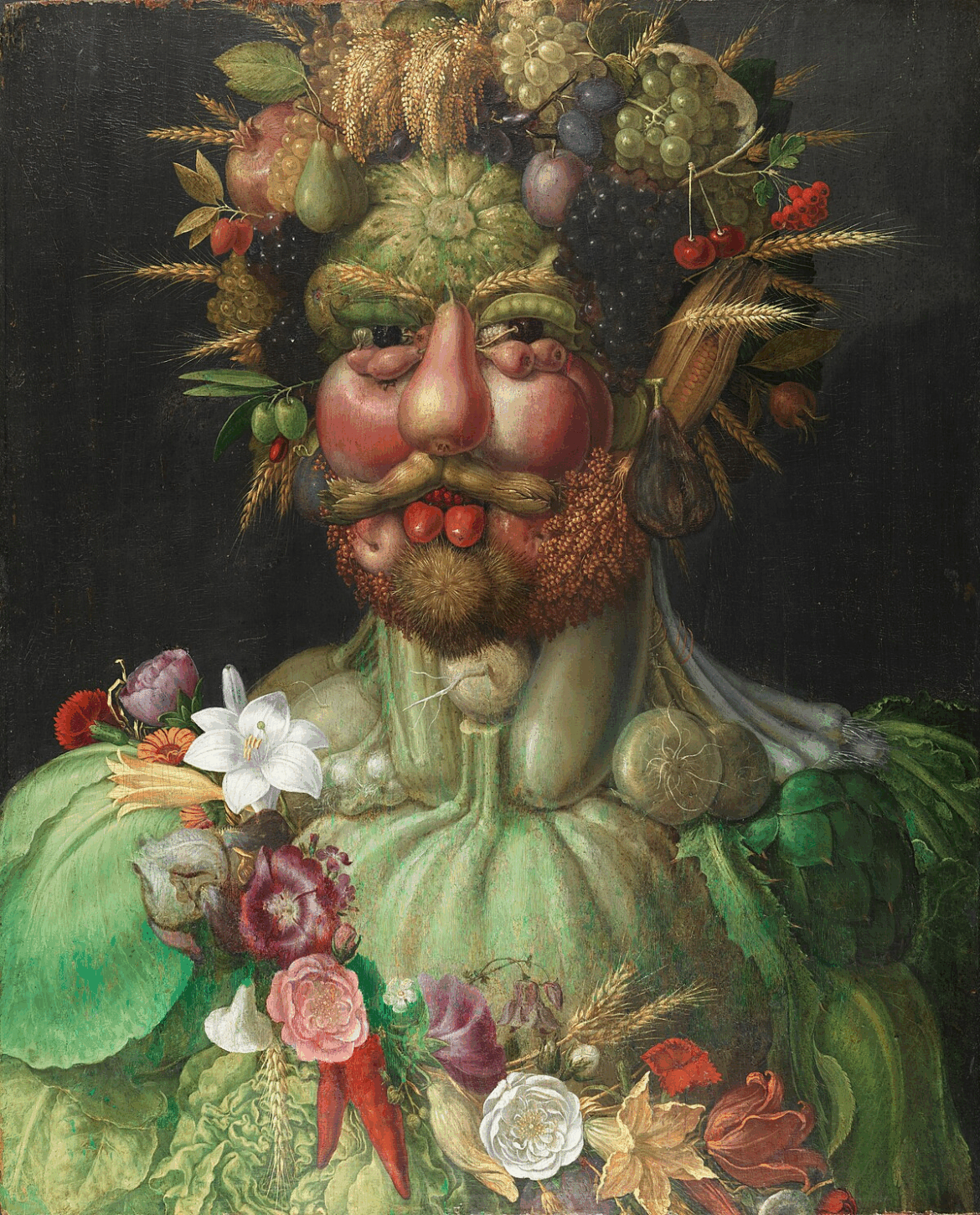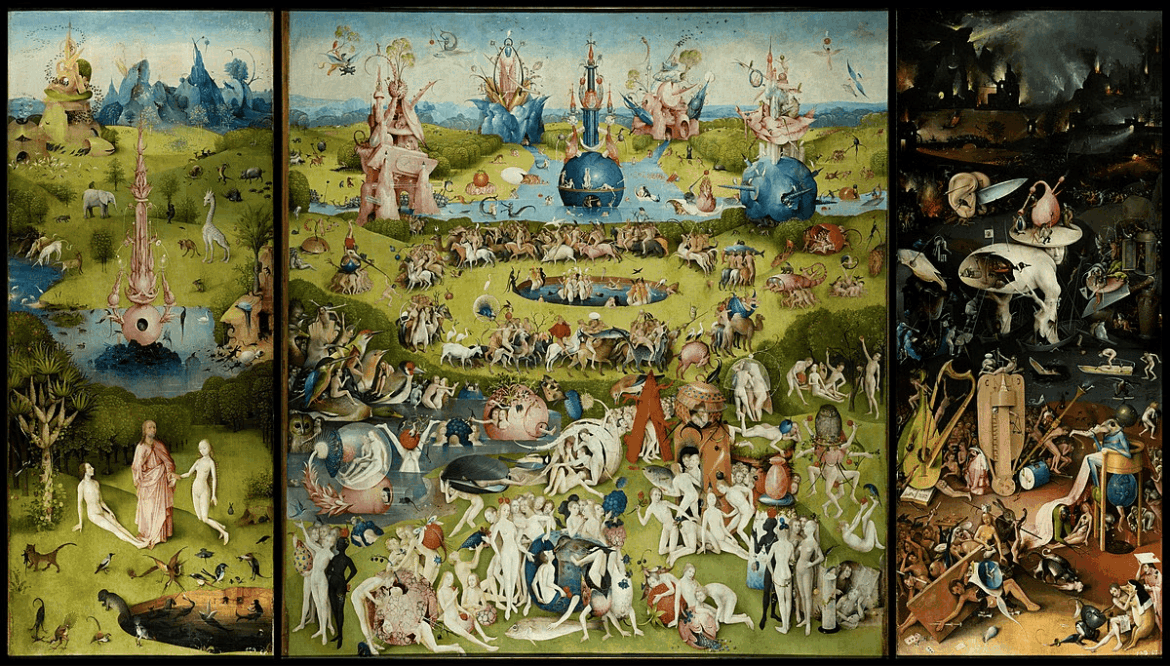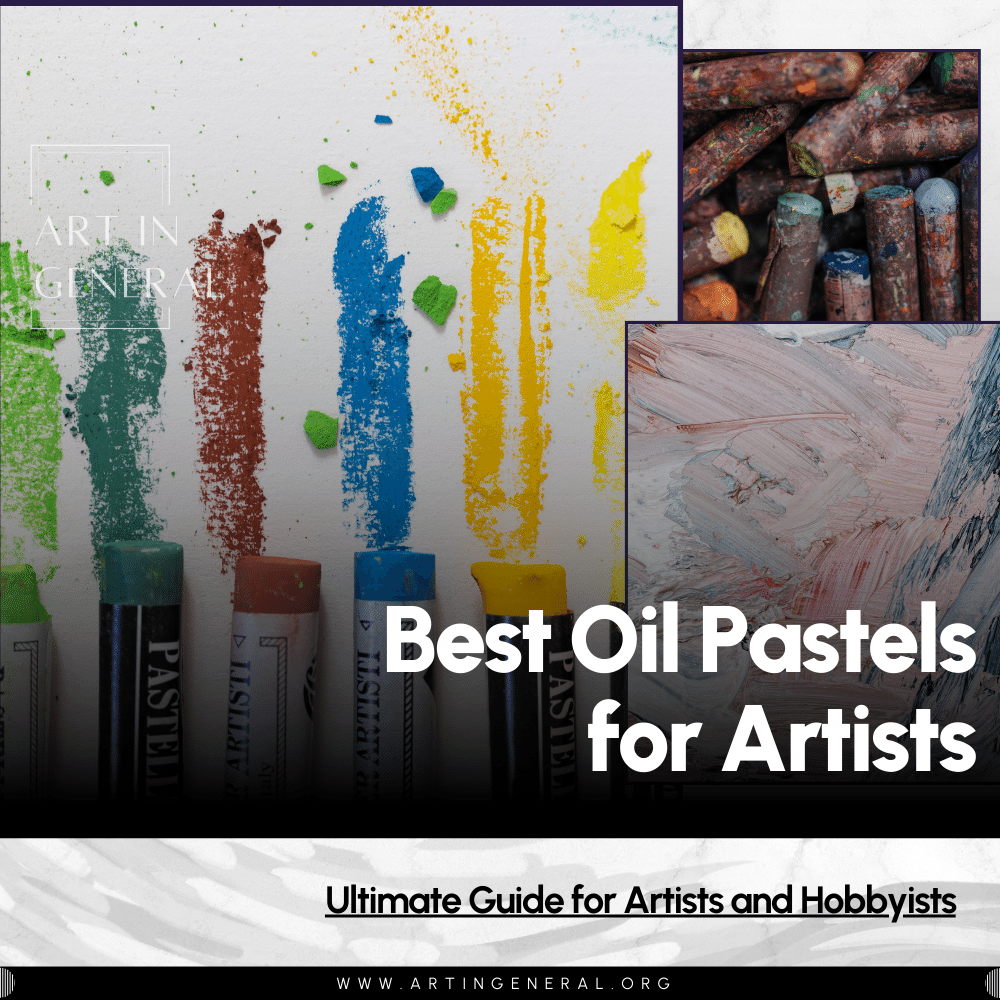
Watercolors are a beautiful medium to work with, some even consider it the perfect medium for beginners to start learning with, however when talking about watercolors supplies we found ourselves swimming in a sea of options regarding paint, brushes, paper, etc.
Finding the best watercolor paints should be as easy as going to the art store and grabbing a watercolor paint set, however, it’s not really that easy right?
Because which paint do we get? Pans? Tubes? What about the brand? And the colors? Too many questions might be overwhelming for beginners or even for experienced artists looking to try a different brand or type of watercolor.
In this guide, we’re going to go through everything, from the different watercolor types, to how watercolors are made, and we’ll also learn how to identify and get the best watercolor paints for you. Plus we’ll list some of the best brands and sets available in the market today and take the weight off your shoulders if you’re new in this world. Let’s get started!
Types of Watercolor Paints
Watercolor comes in different types, we have pans, half-pans, tubes, and liquid watercolor paints, however, the most important “type” classification we should pay attention to is the “grade” of the paint. Understanding the different watercolor types and grades can be significantly beneficial for your art, let’s see what they’re about.
Tubes vs. Pans
Watercolor tubes are “fresh” watercolor paint contained in small tubes. The paint inside the tube is moist and creamy which is great for quick, easy mixing and can be used to mix large quantities of color without losing color intensity or consistency. Tube paints are ideal for larger works and for artists who prefer a more saturated color application, however, they can be less portable than pans and may dry out if they’re not properly sealed after you use them.
Watercolor pans are solid blocks of dry watercolor paint that need water to be activated. While it’s not as easy to obtain saturated color mixes as it is with watercolor tubes, they’re much more portable and easy to carry, making them great for plein-air painting and travel journaling. You can find pans and half-pans which is a smaller presentation, and you can even make your own pans by mixing and filling empty ones.

Liquid Watercolors
Liquid watercolors as their name says are watercolors in a liquid form. They are highly concentrated mixes with intensely saturated colors, easy to apply, and since they’re in liquid form, they don’t need re-wetting. They’re great for fun, experimental techniques but some artists find them hard to apply and use so they’re not as popular as their tube and pan counterparts. Additionally, their color range is usually quite reduced compared to the pans and tubes.

Artist-Grade vs. Student-Grade Paints
As in every other medium, we can find student-grade and artist-grade watercolor paint. Student-grade watercolor paint is more affordable, easier to find, and easier to use in most cases, however it has lower pigment concentration, the colors might be dull or off, and the pigments are not of the best quality, resulting in colors fading over time (or very quickly in some cases)
These paints are suitable for beginners who are just getting into the medium as they are very affordable and won’t make a dent in your wallet, allowing you to invest in good quality brushes and paper.
Artist-grade paint has higher pigment concentration, comes in a more extensive color range, and with top-quality pigments, resulting in vibrant colors that last for ages, cleat transparency effects and beautiful granulating effects. They are also much more expensive, some colors are very hard to find and are preferred by professionals or serious hobbyists looking to sell or exhibit their work.

What Are Watercolor Paints Made Of?
Watercolor paints are made of pigments, binders, and, in some cases, additives and fillers which we’ll learn more about below:

Pigments.
Pigments are basically finely ground particles of a certain color that can be found in natural sources or be synthetically produced. Natural pigments come from earthy sources and have been used for ages. Synthetic pigments are man-made and they can make more intense and vibrant colors. The source of the pigment can affect the paint’s lightfastness, granulation, and texture which can impact the appearance of your work.
Binders
The binder in watercolors refers to the substance that holds the paint together, be it in its creamy form or in its dry form and that helps it adhere to the paper. It consists mainly of gum arabic, but other substances like honey. Glycerin and Ox Gall can be used as well. These substances affect the flow, transparency, drying time, and viscosity.
Additives and Fillers
Additives and fillers are used in watercolor paints for various reasons, including extending the volume of the paint, altering its consistency, and affecting its drying time. However, excessive use of fillers can dilute the pigment’s strength, leading to less vibrant colors. We recommend you to look for paints with minimal additives to ensure the purity and quality of the colors.
Factors to Consider When Choosing Watercolor Paints
Pigment Quality
Choosing paints with high pigment quality can be the difference between vibrant and intense art and muddy, dull art. Bad quality pigments or a low pigment load can mean non-accurate color mixing, muted colors, and poor performance. When buying watercolor paints you should look for pigments with a high lightfastness rating, which should be clearly labeled in the tube or pan, conforming to the ASTM ratings. Look for I or II permanence ratings (ASTM) or 5+ ratings if ASTM is not listed.
Paints with poor lightfastness will last from a week to a couple of years and then the colors will shift, yellow or lose intensity, making your art appear unprofessional and low quality.

Transparency vs. Opacity
Watercolors are a transparent medium, which allows you to work with layering and unique blending techniques. The transparency of watercolors plays a key factor in the medium performance, and while most watercolor paints are transparent, but some lean more towards the opaque side, the transparency and opacity of watercolor paints determine how they layer onto each other, how they mix and what effect they have in your art, so learn how to identify transparent and opaque pigments by reading the labels properly.

Permanence and Staining Power
Permanence, just like lightfastness refers to the durability of the paint once it’s applied, it involves not only the paint’s resistance to light but also humidity and other environmental factors. High permanence ratings mean the paint will be less likely to deteriorate with the passing of time.
In watercolors, you can find pigments that stain and don’t stain, staining pigments penetrate the paper and are difficult to lift or remove, which can be ideal for permanent layers. Non-staining pigments sit more on the surface of the paper and can be easily lifted or manipulated, offering flexibility in techniques such as lifting for highlights or correcting mistakes. If available, try purchasing or getting sample cards from manufacturers as it can be an excellent way to test paints for staining characteristics firsthand before committing to a full purchase.
Granulation
is a characteristic of certain watercolor paints where the pigment particles clump together rather than evenly spreading, creating a textured, grainy appearance on the paper. This is a characteristic of watercolors that is sought by many and avoided by some since it can give an organic feeling to your artwork but it’s not everyone’s cup of tea. Knowing which pigments granulate can influence your choice, some pigments are known for their granulating properties, like ultramarine blue, burnt sienna, and certain greens, so if you’re looking for paints with granulating effects, then seek out those specific pigments.

Color Range
Paint sets with lots of colors are very popular, mainly because an extended color range in watercolors can open up a world of possibilities, make color matching easier, avoid muddy mixes, add depth to your artwork, etc. so going for a brand that offers a wide range of colors or for a set with several pans can be a lifesaver, however, while having many colors can be beneficial, it’s not a must for making beautiful art.
Some artists work wonders with a very limited palette, it’s all about how you use the colors you have. Plus, starting with a few basics and gradually adding more is a great way to learn color mixing, practice color theory, and build your collection without overwhelming yourself.
Price
And finally, price. While artist-grade paints offer the best quality, they can be very expensive, student-grade paints are more affordable but may not offer the same vibrancy or permanence so it’s essential to balance your budget with your needs. Investing in a few high-quality basic tubes and expanding your palate over time while using a student-grade paint set for practicing can be a good strategy.
There are several brands that offer good quality at a more affordable price point, look for “introductory” or “basics” sets designed for students or beginners from reputable brands, as these often provide the best balance between cost and performance.
Top Watercolor Paint Brands and Sets for 2024
- Best Overall Watercolor Paint Set — Winsor & Newton Professional Water Colour
- Best Professional Watercolor Paint Set — Daniel Smith Extra Fine Watercolor Set
- Best Watercolor Paint Set for Illustrators — Schmincke Horadam Aquarell
- Best Student-Grade Watercolor Paint Set — Winsor & Newton Cotman Watercolor
- Best Watercolor Paint Set for Serious Beginners — Paul Rubens Watercolor Set
#1. Best Overall Watercolor Paint Set — Winsor & Newton Professional Water Colour

View Prices
About Winsor & Newton Professional Water Colour
Winsor & Newton is a well-established brand in the art supplies industry, known for their exceptional quality, vibrant colors, and wide range. Winsor and Newton Paints are made with highly concentrated pigment and excellent quality binders, they use ox gall to improve the paint’s flow and have a wide color range with excellent lightfastness, with 93 colors out of their 96 range labeled as permanent.
Most of their range is made of single pigments, which makes the paints purer and clearer, and due to the unique pigment dispersion, the transparency of the paint is unmatched.
Given the history, reputation, characteristics, and price of the brand, there is just no better choice.
This set includes 24 colors in a lightweight, easy-to-use presentation perfect for indoor and outdoor painting.
What makes them great:
- Grade: Artist.
- Our Score: 9/10
- Pigment Quality: High Quality.
- Our Score: 9/10
- Granulation: Some.
- Our Score: 7/10
- Color Range: 109 Colors.
- Our Score: 7/10
- Presentation: Metal Box, 24 Half Pans.
- Our Score: 9/10
- Price: $109.98
- Our Score: 8/10
Pros
- High pigment strength
- Excellent lightfastness
- Wide color selection
Cons
- Higher price point
- Can dry out
- Limited palette sets
View Prices
2. Best Professional Watercolor Paint Set — Daniel Smith Extra Fine Watercolor Set

View Prices
About Daniel Smith Extra Fine Watercolors
If you’re looking for texture, personality, and pure mineral pigments, and if you have the budget for them, then Daniel Smith might be the best for you. Daniel Smith has been a constant presence in the art world since 1993 and has built a quick yet solid reputation among artists due to its high quality, unique range of colors, high pigment load, and granulation effects.
The paints are very vibrant and easy to activate, known for their superior mixing qualities, and formulated to perform excellently across different watercolor painting methods, these paints are the best companions for watercolor lovers and professional artists, however, they are also very expensive and not as easy to come by as other brands.
This set is priced reasonably, plus it includes an empty metal box and 24 half pans ready to be filled with your preferred colors, making it a nice bonus for the price.
What makes them great:
- Grade: Artist.
- Our Score: 9/10
- Pigment Quality: High Quality.
- Our Score: 9/10
- Granulation: Some.
- Our Score: 7/10
- Color Range: 260 Colors.
- Our Score: 9/10
- Presentation: Metal Box, 24 Half Pans.
- Our Score: 9/10
- Price: $121.09
- Our Score: 8/10
Pros
- Unique color options
- Exceptional granulation
- Great mixing qualities
Cons
- Expensive
- Overwhelming choices
- Some rare pigments
View Prices
3. Best Watercolor Paint Set for Illustrators — Schmincke Horadam Aquarell

View Prices
About Schmincke Horadam Aquarell
If you love drawing and painting illustrations, Schmincke could be your best pick. Schmincke has been making artists happy since 1881, gaining a strong reputation for its commitment to quality, purity, and meticulously curated palette of colors. This set is perfect for illustrators because it gives you a wide range of beautiful colors that mix really well together, so you can make all the shades you need. The colors are really bright and wake up right away, plus they blend like a dream, making them perfect for all the different painting styles and techniques.
The colors have excellent lightfastness, so your art will stay looking great, additionally, the set comes with a sturdy metal box that’s easy to carry around, which is great if you like to sketch and paint while you’re out and about. The price is on the expensive side, however, we consider it a worthwhile investment as Schminke’s quality and luminosity are unmatched which is crucial for illustrators.
What makes them great:
- Grade: Artist.
- Our Score: 9/10
- Pigment Quality: High Quality.
- Our Score: 9/10
- Granulation: Some.
- Our Score: 7/10
- Color Range: 265 Colors.
- Our Score: 10/10
- Presentation: Metal Box, 24 Half Pans.
- Our Score: 9/10
- Price: $124.08
- Our Score: 8/10
Pros
- Consistent quality
- High pigment load
- Resoluble when dry
Cons
- Premium pricing
- Smaller pans
- Less beginner-friendly
View Prices
4. Best Student-Grade Watercolor Paint Set — Winsor & Newton Cotman Watercolor

View Prices
About Winsor & Newton Cotman Watercolor
Winsor & Newton’s student grade line is called Cotman, and is specially formulated to be good quality, affordable, and easy to use.
This travel watercolor set includes 24 half pans giving you a wide range to learn and play with, it’s quite a complete set, from bright yellows to deep blues, this set covers the basics and more.
While they’re not as vibrant as their professional counterparts, Cotman still offers good quality paints, the colors mix well and don’t get muddy, they have good lightfastness ratings, plus they’re super affordable so you’ll be able to experiment all you want without worrying about the price tag.
What makes them great:
- Grade: Student.
- Our Score: 8/10
- Pigment Quality: Normal Quality.
- Our Score: 8/10
- Granulation: Some.
- Our Score: 7/10
- Color Range: 109 Colors.
- Our Score: 7/10
- Presentation: Plastic Box, 24 Half Pans.
- Our Score: 9/10
- Price: $36.03
- Our Score: 10/10
Pros
- Affordable
- Good color range
- Easy to use
Cons
- Lower pigment
- Less lightfast
- More binder
View Prices
5. Best Watercolor Paint Set for Serious Beginners — Paul Rubens Watercolor Set

View Prices
About Paul Rubens
Paul Rubens is a newer brand that has proven to be a worthy contender in the watercolor painting industry. This particular Paul Rubens set is artist-grade, which means that the 24 colors included have excellent lightfastness, amazing vividness, and a high pigment load for a surprisingly low price.
The colors are bright, saturated, and a good selection, and advertised as non-granulating which is great for techniques like realism, calligraphy, lettering, and for detailed work.
This bundle includes a small sketchbook made of 100% cotton,140lb, hot-pressed paper for you to test the paints, making it even more worth it. While everything is wonderful the brand is quite new, hence the limited color range and availability of separate tube paints, which we expect to change with the brand’s growth.
What makes them great:
- Grade: Student.
- Our Score: 8/10
- Pigment Quality: Normal Quality.
- Our Score: 7/10
- Granulation: Some.
- Our Score: 7/10
- Color Range: 112 Colors.
- Our Score: 8/10
- Presentation: Plastic Box, 24 Half Pans.
- Our Score: 9/10
- Price: $45.99
- Our Score: 9/10
Pros
- Vibrant colors
- Artist grade
- Portable packaging
Cons
- Pricey for beginners
- Limited color range
- Smaller quantities





Leave a Reply